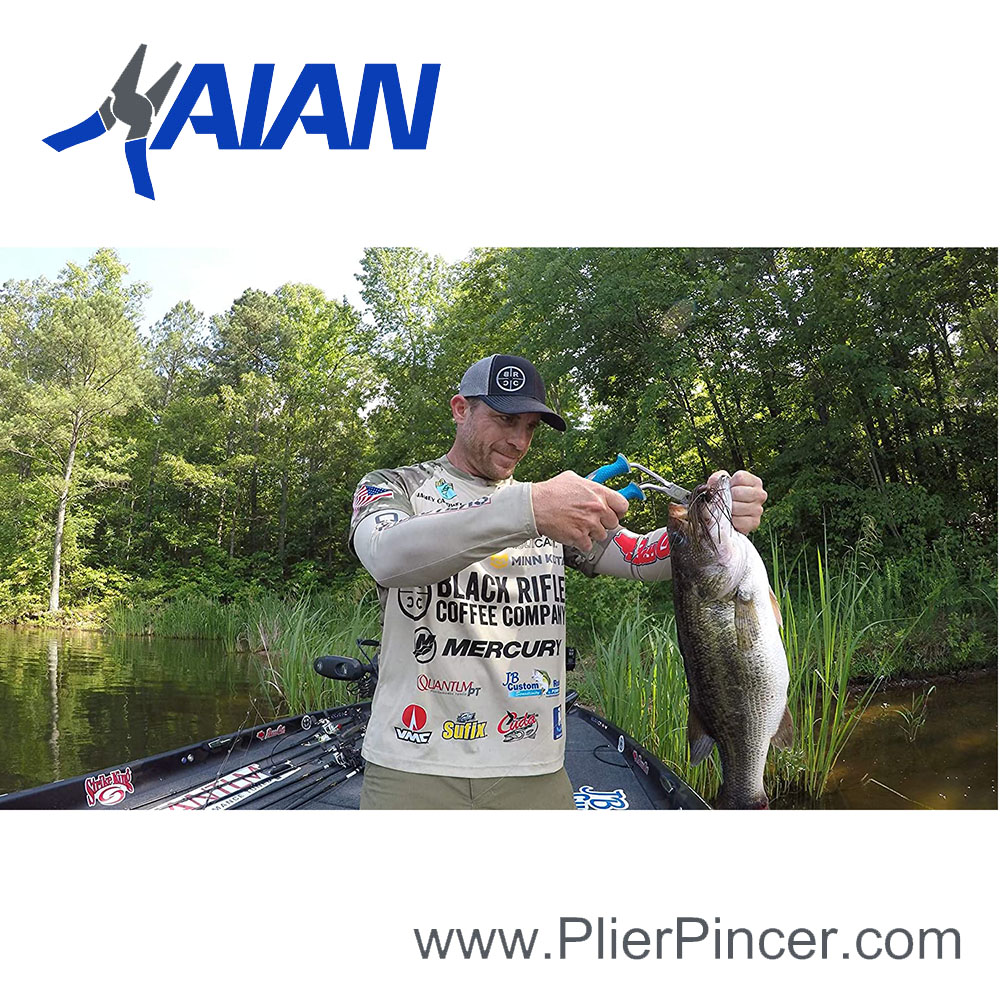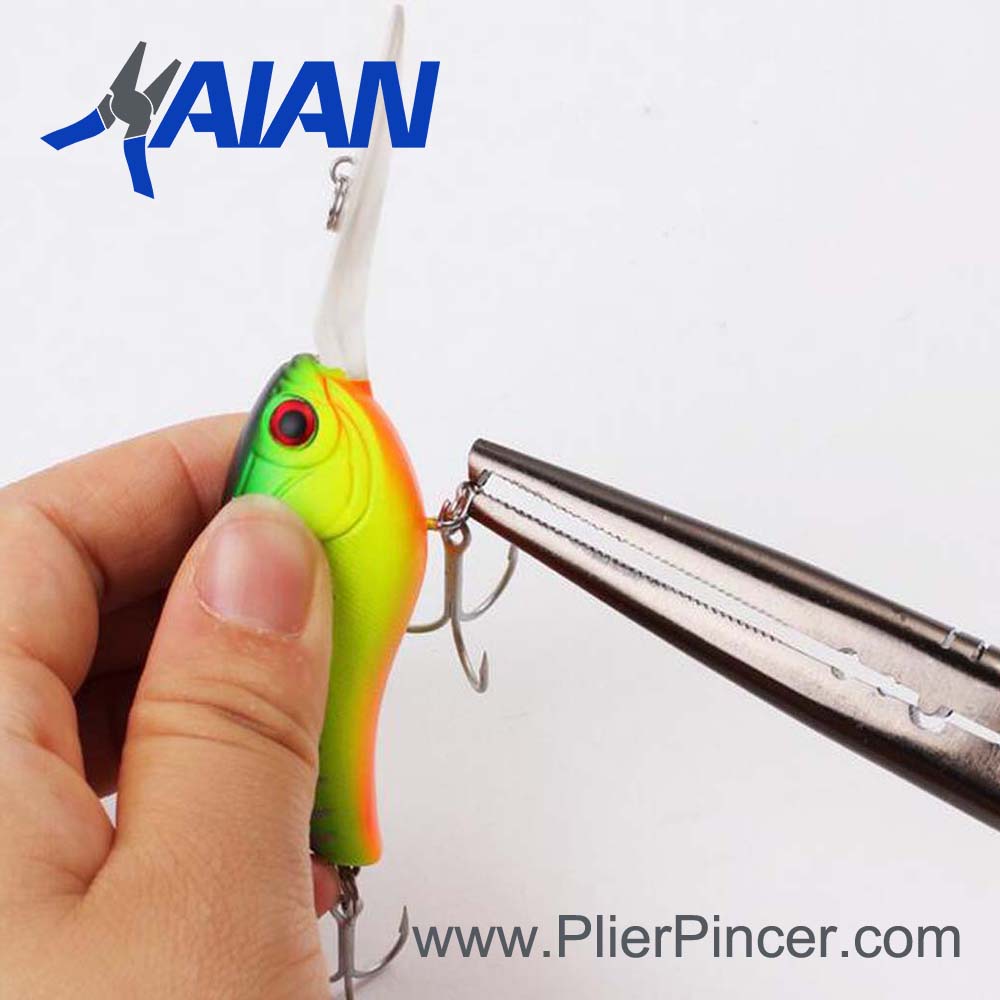
What is fishing pliers?
Fishing pliers are an essential, versatile tool when you’re on the water. They can crimp, cut, split and grip with a leverage and ease unobtainable by any other tool. However, one size doesn’t fit all. Some pliers perform the job with enviable dexterity, while others sacrifice a portion of that speed and efficiency to perform multiple duties.
Here’s a look at the major types of fishing pliers available today, along with the construction and design that makes them ideal for different angling pursuits. Whether you’re replacing a beloved set of pliers worn beyond repair, or searching for something to ease tedious chores, these tips will steer you in the right direction.
Modern Materials
The fact that fishing is pleasure, not work, makes comfort key. Tools for repetitive or prolonged angling tasks need a grip with modest cushion. Foamy handles are not ideal, though. They hold moisture that can corrode the metal underneath and succumb to UV exposure faster than today’s modern polymers and rubber.
Non-slip finishes or some sort of texturing are mandatory for the handles. It beats dropping them overboard or wasting time trying to fish them off the deck when the bite’s on.
Stainless steel and aluminum make the longest-lasting metal components—especially for saltwater fishing. A corrosion-resistant finish is critical, as well.
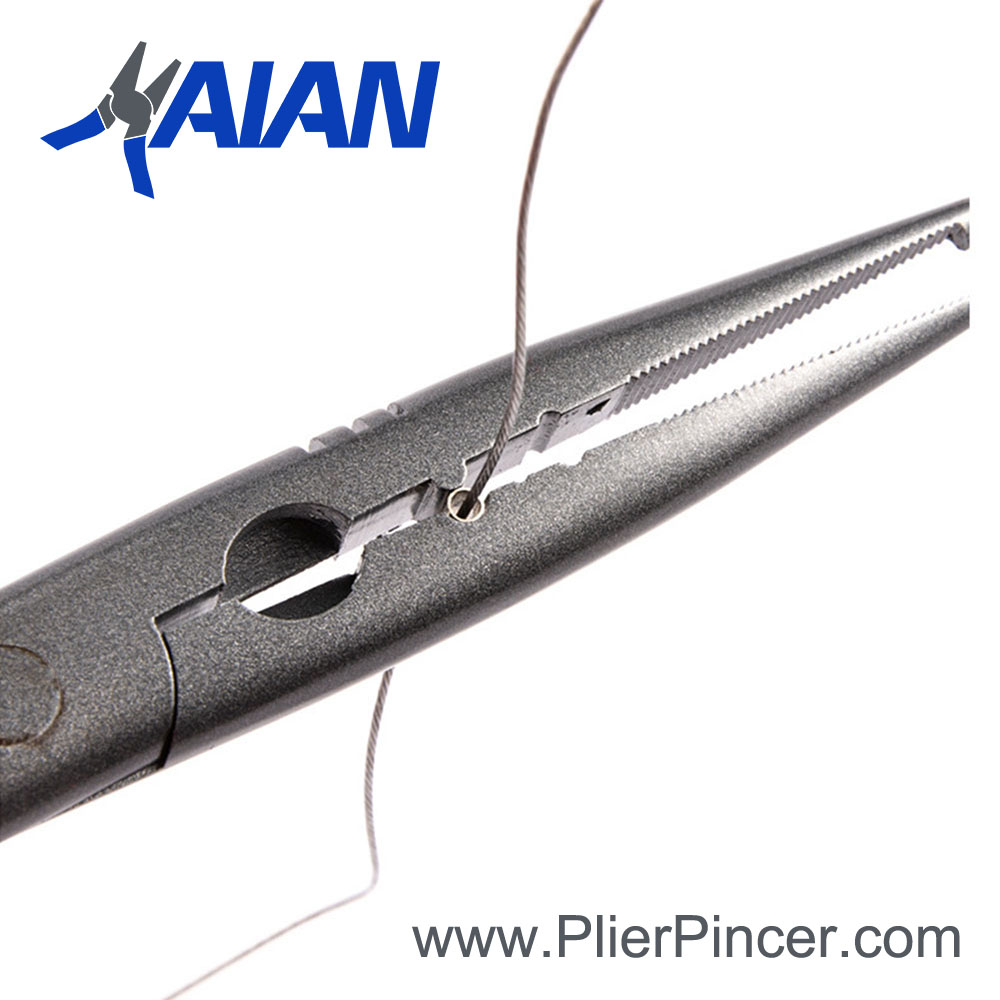
Retention Systems
Even pliers with semi-tacky handles and finger grooves wiggle free when hands get wet or fish are being landed. Lanyards are an asset to prevent them from going into the drink or vanishing off the pier before early morning launches. For inshore anglers it’s not as much of a concern, but having them securely attached is a decided advantage on big water.
Although not as permanently anchored as with a lanyard, a sheath also adds a level of security. More importantly, though, it keeps those pliers at hand and ready for duty when needed.
Primary Duties
Grasping and removing hooks from a fish’s mouth is one of the primary uses for fishing pliers. The bigger the fish, the longer the nose of the pliers needs to be. The added distance is also a comfort when it comes to handling northerns or other toothy quarry. They’re a huge help when the hook is deep, regardless of species.
Cutting Pliers
When it comes to cutting monofilament line, braid or leaders, a quality pair of cutters are a timesaving choice. Many needle-nose designs have an integral cutter, but they aren’t always up to the task on saltwater, where line and leader get industrial tough. They also aren’t good at cutting deeply seated hooks.
High Leverage Fish Hook Cutter Pliers are a solid choice for these tasks. They have a corrosion-resistant finish and are constructed from carbon steel to maintain their edge.
Crimping Pliers
Pursuing big fish often means there’s heavy line to be crimped and it’s not a chore that lends itself to unpredictable results. Any inadvertent damage to the setup risks loss of a once-in-a-lifetime lunker.
A lot of pressure is required to crimp, so make sure anything you select is comfortable and built right. High Leverage Fishing Wire Crimping Pliers provides all the leverage needed to make the task effortless and deliver reliable results.
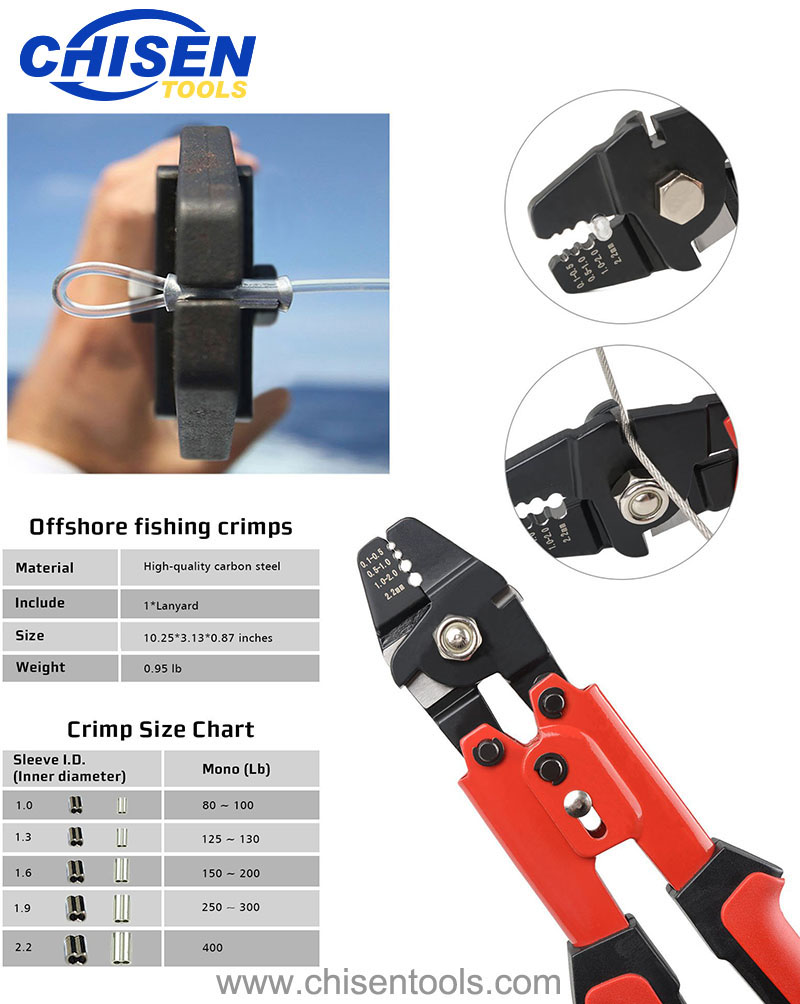
Fisherman using crimper to make fishing rig
A crimper is essential for making and repairing a variety of fishing rigs.
Utilitarian Combos
Despite their utility, pliers don’t weigh a lot or occupy an undue amount of space. For that reason, there are versions available as a set—effectively doubling or tripling the duties they perform.
Long Nose Cutting Pliers Kit comes with a cutter and long-nose pliers in a handy sheath to keep the duo at hand. The 6-inch carbon steel needle-nose pliers and cutter are made from carbon steel and wear a corrosion-resistant finish.
The multi-tool approach is another avenue when the situation requires compact versatility. Southbend’s 7” Multi-Tool includes pliers, wire cutter, LED light, flat head and Phillips head screwdriver and more in a single, easy-to-stow unit. It’s hard to beat for those unexpected repairs and routine chores.
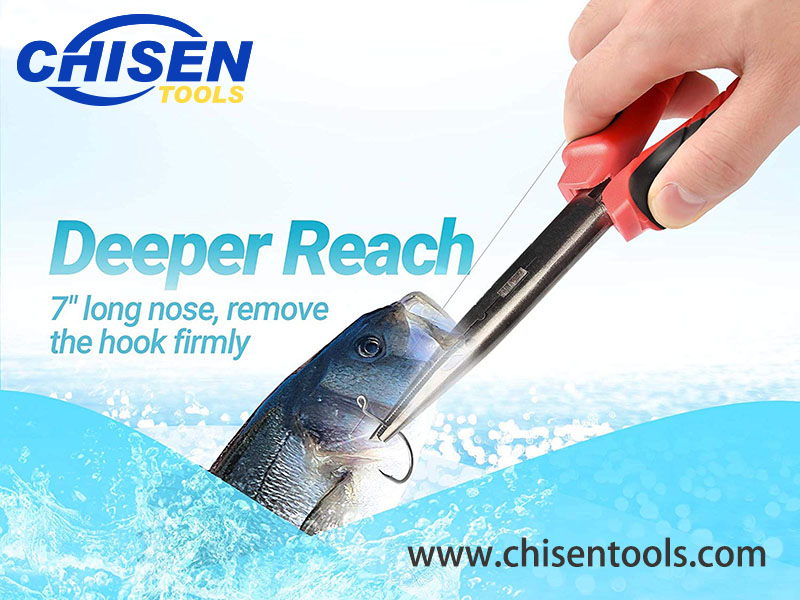
Fisherman removing hook with long-nose pliers
Long-nose pliers are helpful for safely removing hooks.
Split-Ring Tool
The final type of fishing pliers is the split-ring tool. Changing hooks is sometimes needed when pursuing larger fish, and nothing beats this tool. Even freshwater fishermen face changing regulations that can require switching to barbless hooks. Not every angler will find it handy, but it’s indispensable when it comes time to re-rig.
It’s hard to find a tool more versatile for any angling pursuit than a quality set of fishing pliers. Today’s models are more functional, comfortable and long-lasting than ever before. They’re one of the best ways to take a lot of the frustrating work out of the fishing experience.
